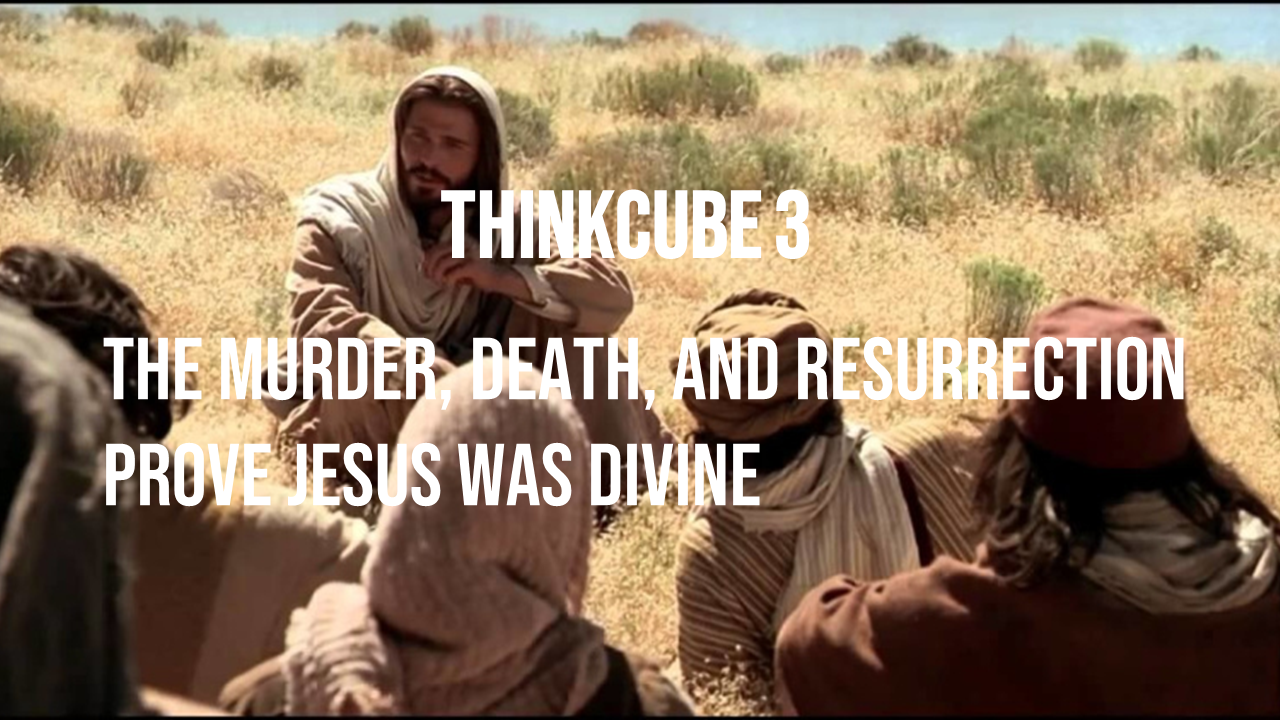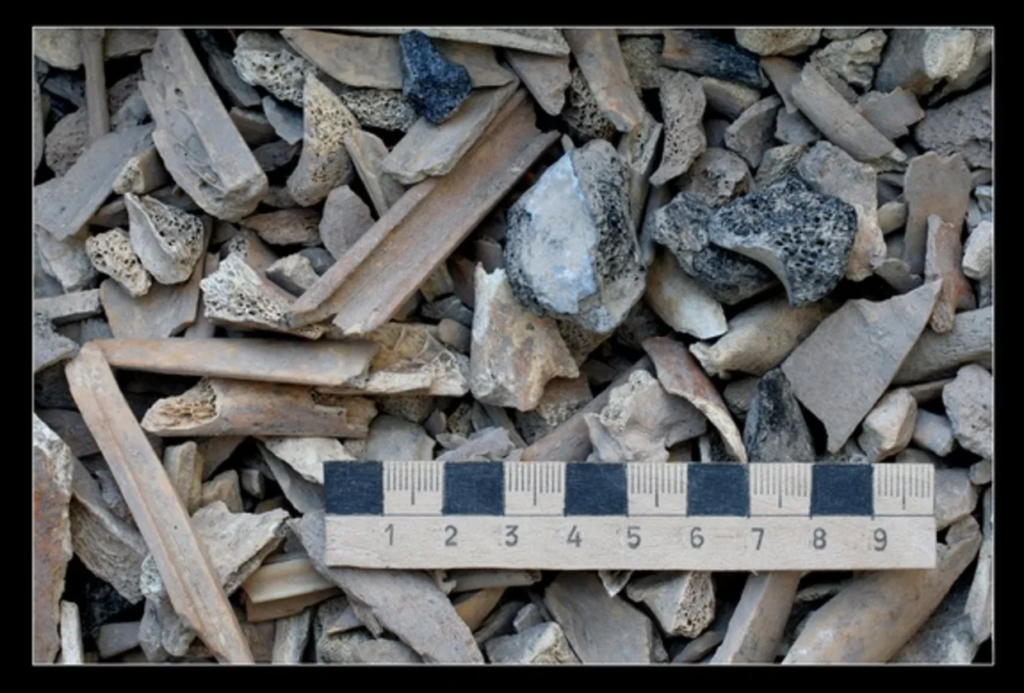
Almost no historian disputes that Jesus really existed in the first century AD and carried out a ministry for a few years and was crucified to death by the Romans. Even a skeptical scholar such as Bart Ehrman argues vigorously for the historical veracity of these basic facts, based on both Christian and non-Christian sources.
So why would a passive, peace loving, gentle teacher who fed, healed, and comforted the poor, and befriended outcasts be persecuted, tortured, and sentenced to die an excruciating death publicly?
On one side of the coin the public far and near loved Jesus almost to the point of rock star status. He was compassionate, humble, a terrific teacher, and He performed amazing miracles to help feed and heal people.
Jesus teaching and behavior should have been considered the traits of a model citizen based on the core principles He taught:
- You must love your neighbor as yourself (Matthew 22:37-40)
- Do not extort money from anyone by threats or false accusation, and be satisfied with your wages. (Luke 3:14)
- If you have two shirts, give one to the poor. If you have food, share it with those who are hungry (Luke 3:11)
Jesus was that rarity in that He truly practiced what He also preached
For I was hungry, and you fed me. I was thirsty, and you gave me a drink. I was a stranger, and you invited me into your home. I was naked, and you gave me clothing. I was sick, and you cared for me. I was in prison, and you visited me.’
Then these righteous ones will reply, ‘Lord, when did we ever see you hungry and feed you? Or thirsty and give you something to drink? Or a stranger and show you hospitality? Or naked and give you clothing? When did we ever see you sick or in prison and visit you?’
“And the King will say, ‘I tell you the truth, when you did it to one of the least of these my brothers and sisters, you were doing it to me!’
Matthew 25:31-40
But on the other side of the coin the religious and political leaders hated Jesus to the point of wanting Him dead.
- But the Pharisees went out and plotted how they might kill Jesus (Matthew 12:14)
- Pharisees went and plotted together how they might trap Him in what He said (Matthew 22:15)
- Sent spies in order to catch Him in some statement, so that they could arrest Him (Luke 20:20-26)
Why, Why, Why …
John Chapter 11 gives insight as to why Jesus was such a threat to the religious and political forces of his day:
Therefore the chief priests and the Pharisees convened a council meeting, and they were saying, ‘What are we doing in regard to the fact that this man is performing many signs? If we let him go on like this, all the people will believe in him, and the Romans will come and take over both our place and our nation
John 11:47-48
Behind the curtain of Jesus death
How big was this system religiously, politically, and economically? Let’s look:
Premise 1: Jesus divinity was a threat to the religious system
The Temple
It was said that whoever had not seen the Temple of Herod had never seen a beautiful building. No other temple complex in the Greco-Roman world compared with its expansiveness and magnificence. One thousand priests trained as masons helped to build the holiest parts of the Temple. Ten thousand workmen, using a thousand wagons to transport materials, constructed the rest of the building.

Herod nearly doubled the size of the Temple Mount from what it was during the period of Solomon, making it in Jesus’ day nearly forty acres. In comparison, Temple Square in Salt Lake City covers ten acres; the famous Forum in Rome was only twenty acres; and the largest temple complex in the world—Karnak, in Upper Egypt, which was two thousand years in the building—is sixty acres, only a third larger than Herod’s Temple Mount.
National Impact
The Temple was the center of Jewish life, economy, and politics.
Threat from Jesus
Jesus came to replace the impersonal Old Covenant that became corrupted with the Temple at the center with a New Covenant that made God accessible without the temple, it’s sacrifices and an elaborate priesthood. A personal system with Jesus as a personal high priest.
The Levitical Priesthood
The temple was a busy place constantly flowing with worshippers, sacrifices, and service to God. It took many skilled people to take care of all the practical matters behind this activity. You might be amazed at how many.
The population census of Israel as a nation was divided by tribes, twelve to be precise. The temple was so prominent that a whole tribe (The Levites) was dedicated to it’s operation.
All the Levites who were thirty years old or older were counted, and the total came to 38,000. Then David said, “From all the Levites, 24,000 will supervise the work at the Temple of the Lord. Another 6,000 will serve as officials and judges. Another 4,000 will work as gatekeepers, and 4,000 will praise the Lord with the musical instruments I have made.”
1 Chronicles 23:3-6
National Impact
Once the Law was given to Moses on Mount Sinai, the temple, it’s sacrificial system and priesthood were ordained by God and placed at the very center and heart of Jewish national life. It is also what the Israelites believed gave them national dignity and favored status with God.
Threat from Jesus
Jesus was now teaching that salvation was through faith in him and that meant that he was the new high priest and that the 2,000 year old temple and it’s sacrifice system would no longer be necessary.
Premise 2: Jesus divinity was a threat to the political system
The Religious and Political Leadership
There were three distinct groups that composed the religious and political leadership of Israel during Jesus ministry. All three were opposed politically and religiously most of the time. They all three hated Jesus for different reasons and at the end cooperated in getting him crucified.
Below is a chart of these groups, their roles, and why they hated Jesus so much
| Group | Social, Political, and Religious Position | Why they hated Jesus |
| Pharisees | Middle class businessmen, religious leaders of the synagogues | Jesus exposed their hypocrisy and extortion Ate with other people than Jews and taught they could be saved Jesus told them that many of their traditions and new laws were from man and not God |
| Sadducees | Social and wealthy elite-controlled the Temple and Sanhedrin | Did not believe in the resurrection, angels, heaven or hell Believed in unrestrained free will-God had no role in personal lives of humans Jesus was huge critic of their for profit management of temple |
| Sanhedrin | 70 member governing body for both religious and legal issues of Jews made up of Pharisees and Sadducees | Jesus claims of authority was a threat to religious and political structure of Israel |
National Impact
All three of these groups used the Temple and the established religious system to wield control over religion, politics, social structure and the economy.
Threat from Jesus
Jesus exposed their corruption and hypocrisy. He also claimed divine authority to reform things. Jesus was not only demanding reform, but he was doing miraculous signs that showed he indeed had the the divine authority to bring in the new covenant. This was the game-changer.
Premise 3: Jesus divinity was threat to the economic system
In Judaism, described in the Bible, there are three pilgrimage festivals. One is in the fall, and two are in the spring. The biggest holiday that would bring in pilgrims from all over the the known world is the holiday of Passover.
During Passover Jerusalem would swell to over 200,000 people and the city would be filled with pilgrims who traveled in caravans scrambling to find rooms at inns, and buying livestock for their families personal sacrifice and Passover meal afterwards. The other two festivals like the Passover were tremendous economic enterprises.
An analysis of bones found in an ancient dump in the city dating back 2,000 years revealed that animals sacrificed at the temple came from far and wide.
The study shows that there is a major interprovincial market that enables the transfer of vast numbers of animals that are used for sacrifice and feasting in Jerusalem during that time period,” said study co-author Gideon Hartman, a researcher at the University of Connecticut.
The finding, published in the September issue of the Journal of Archaeological Science, confirms visions of the temple depicted in historical Jewish texts and suggests the economic heart of the city was its slaughtering operation. [Photos: Bronze-Age Donkey Sacrifice Discovered in Israel]
One of the most recognized quotes of Jesus in the New Testament dealt with how what was supposed to be times and sacrifices designed to show humility and repentance had become about money for the ruling elite.
Jesus entered the temple courts and drove out all who were buying and selling there. He overturned the tables of the money changers and the benches of those selling doves. 13 “It is written,” he said to them, “‘My house will be called a house of prayer,’[e] but you are making it ‘a den of robbers.’[f]”
Matthew 21:12-13
National Impact
At the time, Jerusalem was a bustling metropolis without any natural economic resources, as it was landlocked and far from most major trade routes. According to the Talmud, a Jewish religious text, the city’s economic heart was the Holy Temple, the only place where Israelites could sacrifice animals as offerings to God.
Threat from Jesus
Jesus came to do away with the sacrifice system which was to just be a symbol that sin was a capital offense to God. He came to offer a once an for all sacrifice for sins which in turn would render the Temple and it’s lucrative sacrifice system obsolete.
The Sadducees and Pharisees were the two most prominent teaching factions in Israel and their philosophies and teaching differed so radically that they did not get along at all. Yet they pulled together to conspire, bribe witnesses and hold mock trials so that they could exterminate Jesus who had never violated a single person or Jewish law. Once again why?
Was it because He was a mere teacher who taught something different? Both of the aforementioned groups taught different things from each other on major tenets of the same religion.
Last things to ponder
Most non-Christians don’t know that the Roman rulers in charge of trials and sentencing publicly stated that Jesus had done nothing worthy of the death.
Herod ruler of Galilee and Perea, and Pontius Pilate the Governor of Judea extensively interviewed Jesus before his sentencing and both publicly declared that he had done nothing to merit the death penalty:
Pilate then called together the chief priests and the rulers and the people, and said to them, “You brought me this man as one who was misleading the people. And after examining him before you, behold, I did not find this man guilty of any of your charges against him. Neither did Herod, for he sent him back to us.
Look, nothing deserving of death has been done by him. I will therefore punish and release him”
But they all cried out together, “Away with this man, and release to us Barabbas”
Luke 23:6-18
The only reason Pontius Pilate released Jesus to be executed was because he feared the Sanhedrin and Pharisees ability to create riot and timult that would get him punished by Rome for not maintaining peace in his juristiction.
So when Pilate saw that he was gaining nothing, but rather that a riot was beginning, he took water and washed his hands before the crowd, saying, “I am innocent of this man’s blood; see to it yourselves.”
Matthew 27:24
Jesus not only received the death penalty which did not seem warranted, but the Jews wanted him crucified as a means of execution –a method normally reserved for murderers, thieves or violent offenders. The signifigance being that crucifixion was not only brutal, but public in the extreme.
Crucifixion was the basic servile supplicium (slave punishment) and considered the summum supplicium (extreme penalty).
As implied, crucifixion involved a highly shameful form of death (418). In
Gary Habermas, Liberty University
addition to the medical, political, and other factors, victims were often crucified
naked, though this does not necessarily mean total nudity, as coverings of one sort
or another were often employed
Why would the Jewish religious and political leaders pressure Roman authorities relentlessly to sentence Jesus who those same authorities said was not worthy of such a sentence?
Why would Jewish leaders want a someone renowned for non-violence and who taught to love one’s neighbor as himself to be executed in the most public and shameful way imaginable?
Discussion Questions: Is it plausible that the lengths the Sanhedrin and Pharisees were willing to go to pressure Roman Authorities to kill Jesus publicly and shamefully was to (1) exterminate the man who had through miracles showed that he was God’s savior who had the authority to do away with the sacrificial system? (2) Did Jewish authorities use the shameful and public method of execution as propaganda to show the public Jesus was no longer worthy of being respected as Messiah?

